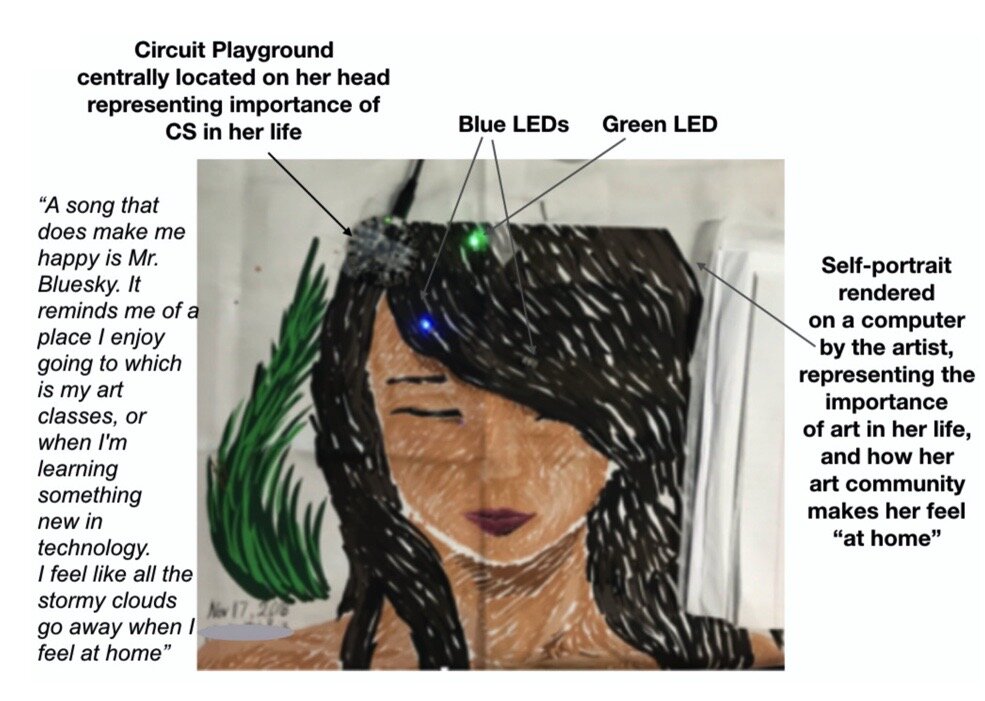Personal, Artistic and Computational Dimensions in High School Student Projects
Much of maker education’s expansion has focused on STEM (science, technology, engineering, mathematics) learning, leaving out equally promising opportunities for integrating arts learning. In this paper we share findings from a project in which high school students created electronic-textiles-based art representing features of a community important to them as a part of an elective high school computer science class. We addressed the following research questions: (1) What kinds of personal and community meanings did students convey through their maker projects? (2) How did students engage with artistic dimensions in their projects? (3) How did coding interactive features support students’ artwork? Drawing on daily observations, pre/post interviews, and documentation of students’ artifacts (photographs of in-process designs, design notebooks, and artist statements), we developed four case studies of students as they made art representing their communities using electronic-textiles as their primary medium. Our findings reveal how making became a means of personal, artistic expression with quite literal layering of coded meanings, and how maker activities can integrate art. In the discussion we consider the opportunities for authentic artistic expression in maker education by distinguishing the difference between craft and art in a maker education context. We consider the ways in which these ideas have implications for equity, pedagogy, and future research.
Published May 15, 2020 in Frontiers in Education https://doi.org/10.3389/feduc.2020.00051
